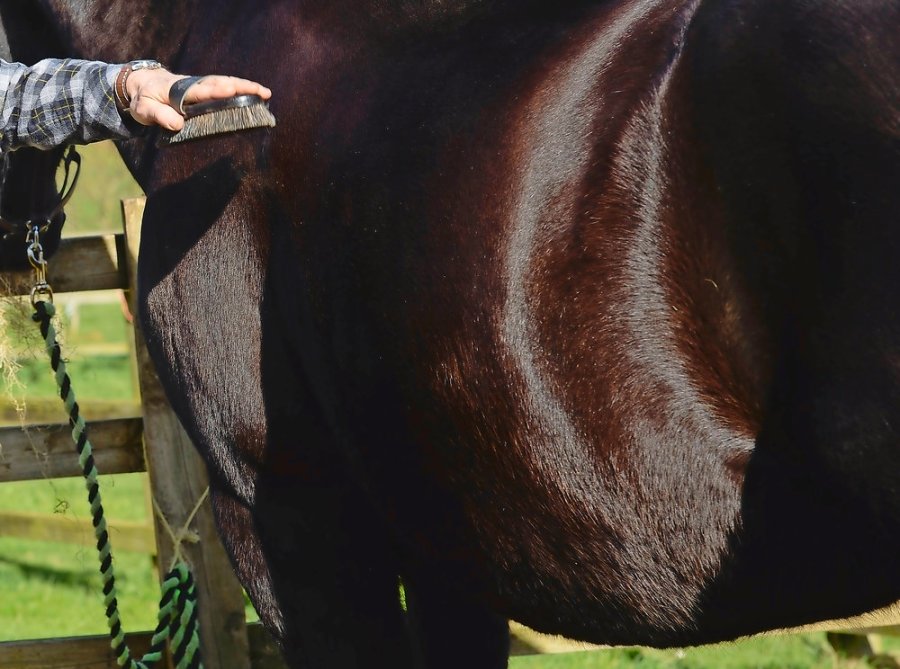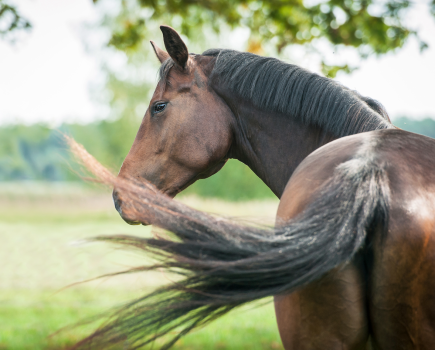Want to get a good shine on your horse’s coat in time for showing season? Nutrition expert Clare Barfoot from Spillers has a few tips on how to his coat gleaming…
Your horse reader asks: What can I feed to enhance the shine of my horse’s coat?
Clare says…
The biggest influence on coat condition is your horse’s overall health, so it pays to start with the basics; think about his worming programme, his teeth and his general health status.
If you need any advice on these aspects of his management speak to your vet before you turn to nutrition.
Firstly, make sure you are feeding enough forage. This is the foundation for a healthy digestive tract, which is, in turn, the foundation for a healthy horse.
Ideally, forage should be provided ad-lib (especially if your horse isn’t overweight) but don’t feed less than 15g (dry matter) per kilo bodyweight.
Next, make sure your horse’s diet is fully balanced. Nutrient deficiencies can affect coat condition so providing your horse with a well-balanced diet is the key to producing a healthy horse on the inside, as well as a lovely shiny coat on the outside.
Some of the simple ways you can get his condition up to spec include:
1. Pack in the protein
Good quality protein sources, particularly sulphur-containing amino acids (the building blocks of proteins) such as methionine, are important for hair production.
You can find high levels of protein in different feeds and supplements on the market – just check the back of the feed bag before you buy.
2. Check his vitamin levels
Vitamin E deficiency, vitamin A deficiency or excess, can result in a long, scruffy-looking coat and iInadequate amounts of trace minerals such as iron, zinc, selenium and copper may also influence coat quality, growth and spring shedding.
If you think his vitamin levels might be low, then it could be worth contacting a nutritionist so you can get an analysis of his feeds.
3. Oil up
Horses’ diets typically contain 2-3% oil, so feeding additional soya, rapeseed, corn or linseed oil can help to provide an extra source of essential fatty acids for that ‘Horse of the Year Show under the lights’ gleam.
Remember oil doesn’t always have to come in a bottle! In an ideal world if you are adding more than 100ml of oil it should be added alongside extra vitamin E.
The most convenient way to incorporate it into your horse’s diet is to choose a feed that already contains it.
5. Use a balancer
On a practical note the best way to ensure your horse is getting a balanced diet is to feed a good quality compound feed at the recommended level for your horse’s size and workload.
If your horse doesn’t require the recommended amount in order to maintain his condition pick a balancer as this will supply good quality protein alongside the vitamins and minerals he needs. This way he doesn’t get any unnecessary calories.
6. Use some elbow grease
Finally, don’t be fooled – even with all these tips, you’ll still need to get the body brush out and apply some elbow grease.
Brushing your horse will help keep his coat mud and scurf-free and will stimulate blood flow bringing coat enhancing nutrients to the hair follicles to produce a shine you can be proud of.









